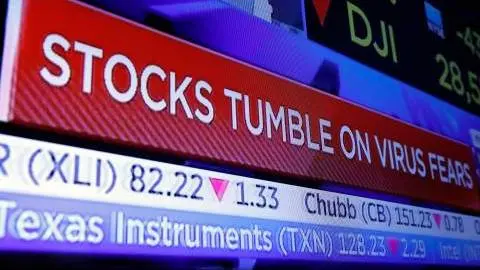FX: The dollar deflates
Given the US dependency on the capital markets for financing, the Fed looks set to be at the forefront of the monetary response to the Covid-19 crisis. The end of US ‘exceptionalism’ in terms of growth and interest rates means that we should now be looking at a temporary 5-10% correction in the dollar. We revise our 2Q20 EUR/USD forecast up to 1.15
Trouble sticks to the formerly Teflon dollar
2018 to 2019 was characterised by the tax stimulus-powered US economy and President Trump’s trade war. The combination of strong domestic US growth set against a slow-down in more open overseas economies created the investment theme of ‘US exceptionalism’ and triggered a 10% rally in the trade-weighted dollar.
Covid-19, of course, respects no borders and now represents a ‘levelling’ force in the global economy. US growth and interest rates are therefore converging on the low levels seen overseas and beg the question whether the dollar should still be so strong?
If we are to see a EUR/USD correction this year, it should prove temporary
We see (some) parallels here to the 1998 period. Following broad-based dollar strength and US productivity growth from 1995 onwards, US markets received a shock in 1998. The Asian financial crisis spilled over to a Russian sovereign default that year, triggering a collapse in the US hedge fund, LTCM. In response to threats to the financial system, the Fed cut rates 25bp in September, October and November triggering a 10% correction in the dollar.
Arguably dollar fundamentals were a lot stronger then, given the budget surplus and a slim current account deficit, than they are now and explained the quick recovery which saw USD push back to new highs in 2000. Parallels today also extend to the poor European investment climate that existed in 1999-2001. Europe does not look a very attractive investment destination right now meaning that if we are to see a EUR/USD correction this year, it should prove temporary.
Emergency Fed cuts should start to soften the dollar

The dollar’s soft centre
The US economy’s dependency on the securities markets for financing means that the Fed will be at the forefront of the monetary response to Covid-19. This is important since no longer are US short-end rates anchored by a Fed needing ‘material’ changes to move. Instead of bullish flattening in the US yield curve as markets price a late-cycle slow-down, the bullish steepening represents reflationary Fed policy – i.e. a Fed response underway. A weaker dollar is a typical part of the Fed’s reflationary tool-kit and is especially the case in this US election year.
Our point here is that the Fed looks set to bow to the increased financial market and later real sector pressure (we expect another 50bp of Fed easing) and US rates will continue to converge on those of trading partners. The narrower interest differentials become, the greater their correlation with FX markets in our opinion. We could easily see US two-year spreads against EUR and JPY narrowing by another 50bp, for example, making it a little easier to FX hedge US bond portfolios.
As dollar rate differentials return to more normal levels, the correlation between differentials and dollar pricing increases

New EUR/USD profile
Now incorporating a 100bp Fed easing cycle and very little room to manoeuvre from the ECB, we look for EUR/USD to correct higher over the next three to four months. This move could carry EUR/USD to the 1.15 area. We then tentatively pencil in a correction back to 1.10 by year-end and throughout 2021.
The lower profile over the longer term incorporates the views that:
- the Fed takes back the 100bp easing cycle in its entirety through 2021 and
- US presidential elections do not demand a significant risk premium of the dollar.
Clearly this scenario can be challenged by:
- a larger US slow-down that keeps the Fed policy rate lower for longer and
- potentially weaker growth, giving Bernie Sanders a better shot at the White House. But that is not our baseline.
Away from the dollar correction, we expect pro-cyclical and EM high yield currencies to under-perform the defensive JPY and EUR through March. We expect asset market volatility to remain high over this period and discourage investors from carry trade strategies. Once equity markets settle down, however, we suspect investors will be positively re-assessing high yield FX markets given that risk-free interest rates will have fallen below 1%.
Our new EUR/USD forecast profile

This publication has been prepared by ING solely for information purposes irrespective of a particular user's means, financial situation or investment objectives. The information does not constitute investment recommendation, and nor is it investment, legal or tax advice or an offer or solicitation to purchase or sell any financial instrument. Read more
Download
Download article
6 March 2020
March Economic Update - Coronavirus: The unknown and unprecedented risk This bundle contains 9 Articles